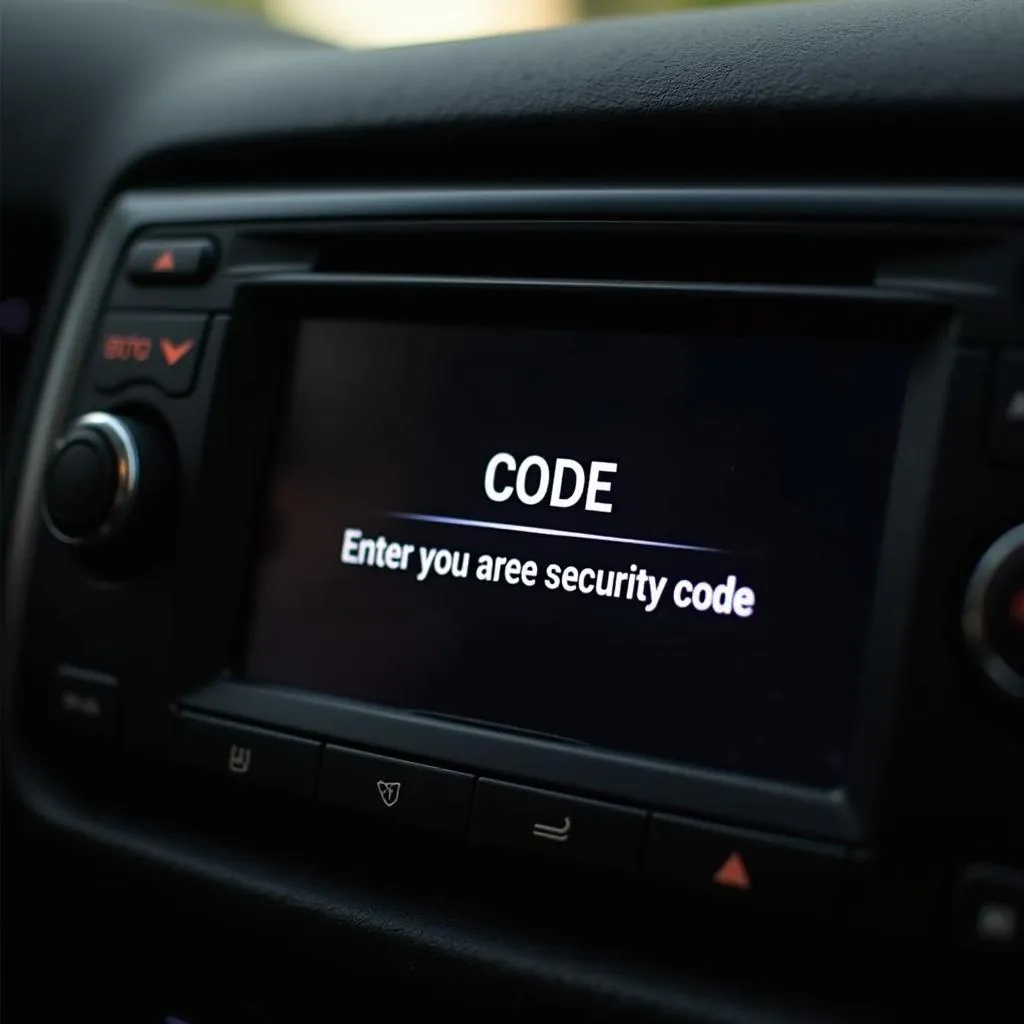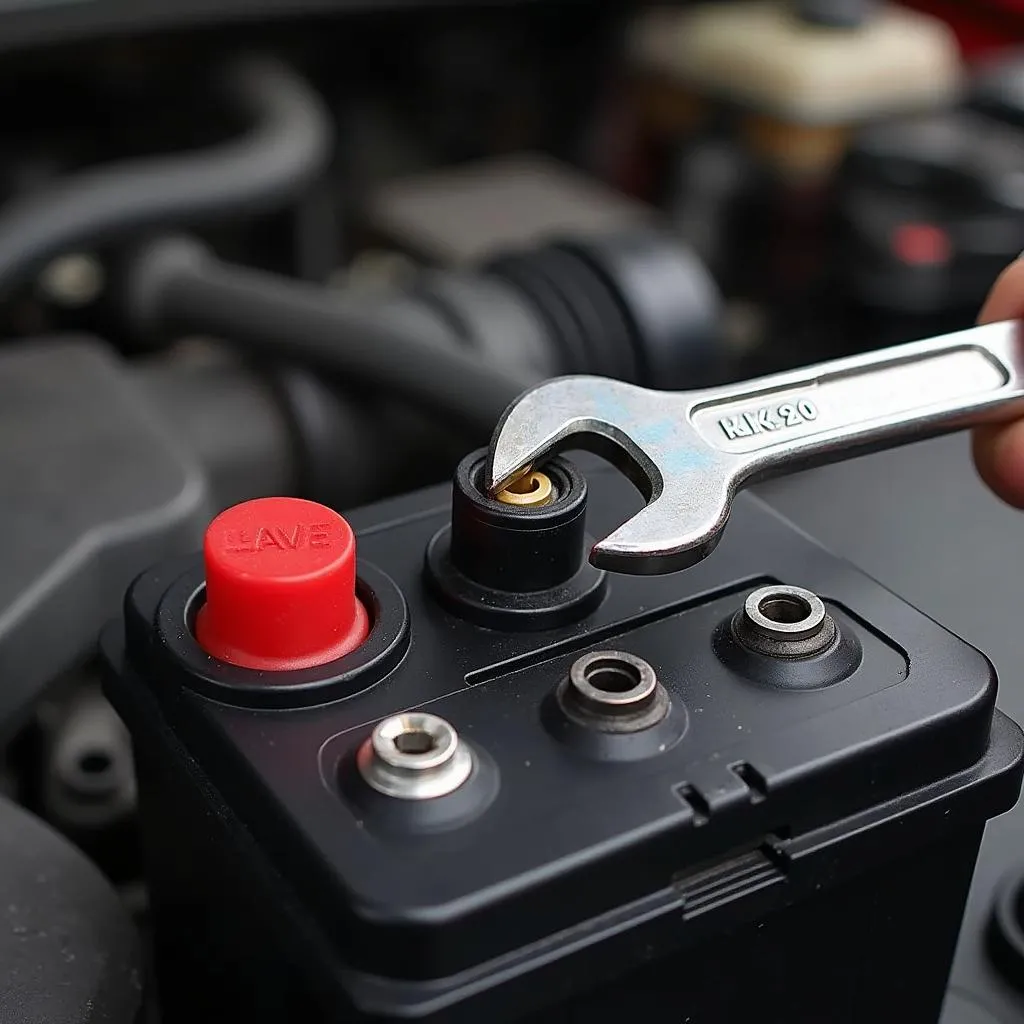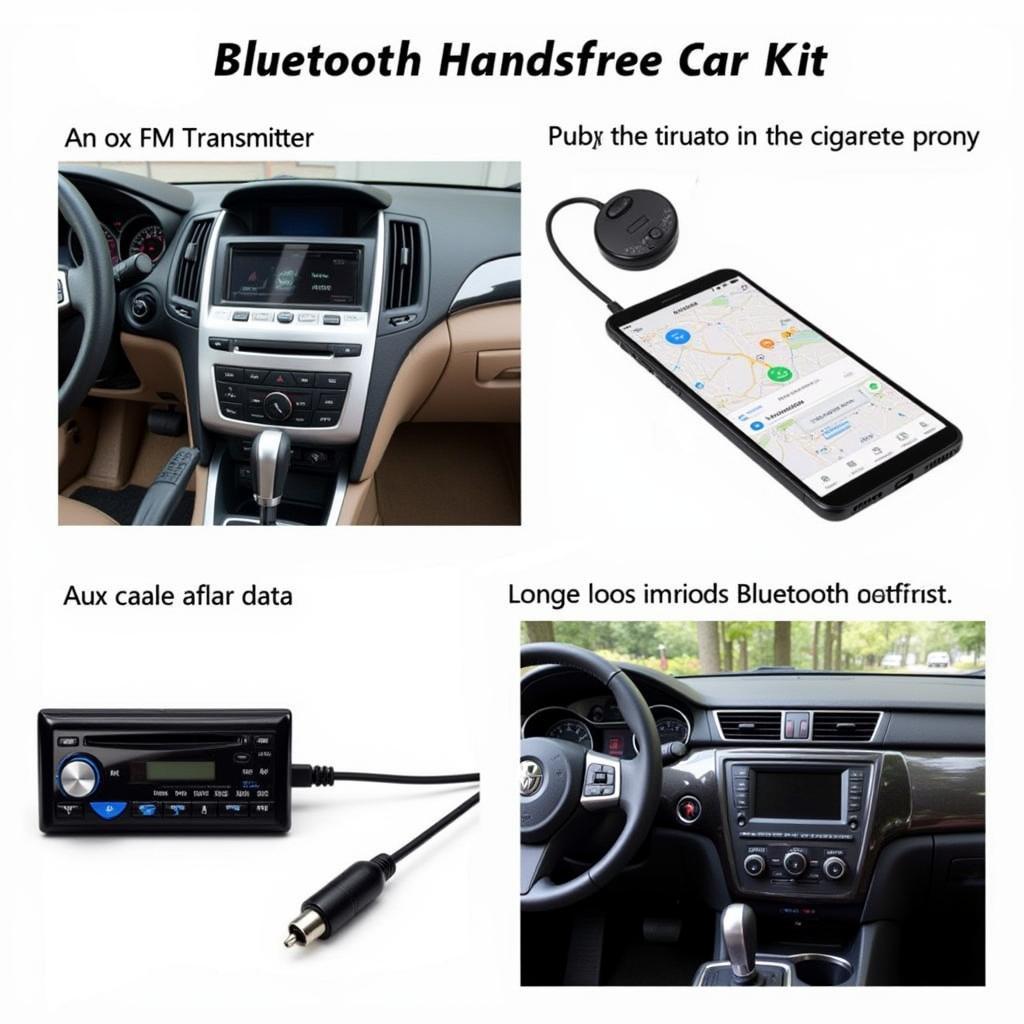Dealing with a car radio locked by an anti-theft system can be frustrating. Whether you’re experiencing issues after a battery change, a recent disconnection, or simply bought a used car, this guide will walk you through the process of how to potentially resolve this common issue.
Disclaimer: Tampering with your car’s electrical system can be risky. If you’re uncomfortable with any of the steps, it’s best to consult a professional mechanic or a specialized car audio technician.
Understanding Car Radio Anti-theft Systems
Before diving into solutions, it’s helpful to understand how these systems work. Car radio anti-theft systems are designed to deter theft by rendering the radio useless if it’s disconnected from the vehicle’s electrical system. This is usually achieved through a security code or, in some cases, a physical lock mechanism.
Identifying if Your Car Radio is Locked
Here are some tell-tale signs:
- The radio won’t power on at all. This is the most obvious sign.
- The radio displays “CODE” or “LOCKED.” This indicates that the radio needs its security code to unlock.
- You hear a clicking sound when you try to turn it on. This may point to an internal lock mechanism.
Tools and Information You Might Need
- Your Car’s Owner’s Manual: This should contain information about your specific radio model and any security features.
- Radio Security Code: Usually found in the owner’s manual, on a separate card, or sometimes printed on the radio itself (check the sides or back).
- Pen and Paper: For noting down the security code or any error messages.
Methods for Disabling the Anti-theft Feature
1. Entering the Security Code
- Locate your radio’s security code. This is usually a four-digit code.
- Turn on your radio. The display should show “CODE” or a similar prompt.
- Use the radio preset buttons (1-6) to enter the code. Some radios may have separate number buttons.
- Press the “Enter” or “Seek” button after entering the code.
- If successful, the radio should unlock. If you enter the wrong code repeatedly, the radio might lock you out for a period of time.
 Car radio with code entry prompt
Car radio with code entry prompt
2. Battery Reset
Note: This method is less likely to work on newer cars with more advanced anti-theft systems.
- Disconnect the negative (black) terminal of your car battery.
- Wait for 15-30 minutes. This allows the electrical system to discharge fully.
- Reconnect the negative battery terminal.
- Try turning on your radio. You may need to reset your clock and radio presets.
 Disconnecting car battery negative terminal
Disconnecting car battery negative terminal
3. Consulting a Professional
If the above methods don’t work, it’s time to seek professional help.
- Contact your car’s dealership. They often have the tools and expertise to deal with anti-theft systems.
- Visit a reputable car audio specialist. They can assist with more complex issues or aftermarket radio installations.
Frequently Asked Questions
Q: What if I don’t have my car radio code?
A: You can try contacting your car’s dealership. They might be able to retrieve the code using your Vehicle Identification Number (VIN).
Q: Can I bypass the anti-theft system completely?
A: It’s highly discouraged to tamper with or bypass the anti-theft system. This can damage your vehicle’s electrical system and potentially void your warranty.
Q: My radio is still locked after trying all the methods. What now?
A: In this case, it’s best to reach out to a qualified car audio professional or your dealership’s service department. You might have a more complex issue requiring specialized tools and knowledge.
For example, as highlighted by automotive electronics expert, Dr. Emily Carter, in her book “Modern Automotive Security Systems,” “Modern anti-theft mechanisms are often integrated with other vehicle systems, making DIY solutions risky and potentially damaging.”
Need More Help?
Dealing with car electronics can be complex. If you’re facing persistent issues or are uncomfortable performing these steps yourself, remember that Cardiagtech offers a range of diagnostic tools and services. Contact us today to learn more about how we can assist you.



